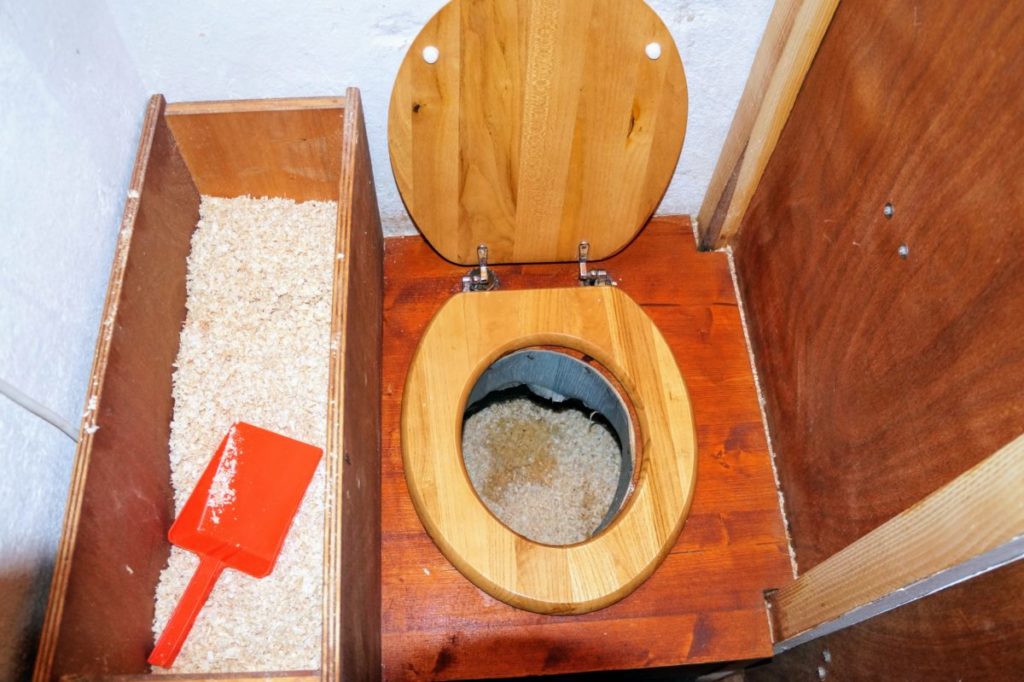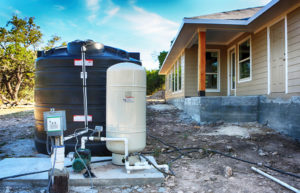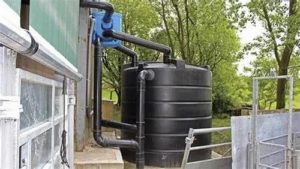Composting toilets are a popular choice for eco-conscious homeowners and businesses looking to reduce their environmental footprint.
However, one common challenge associated with these systems is managing odors.
If not properly managed, unpleasant smells can permeate the surrounding area, causing discomfort and inconvenience for users and neighbors alike.
Fortunately, there are several effective tips and techniques that can help minimize or eliminate odors in composting toilets, improving their overall functionality and user experience.
We will explore these strategies and provide practical advice on how to implement them for successful composting toilet management.
Add carbon-rich materials
Carbon-rich materials like sawdust, straw, or shredded paper can help to absorb and neutralize odors in composting toilets. These materials should be added in the proper proportions to ensure that the composting process is balanced and effective.
These materials help to absorb and neutralize odors, ensuring a pleasant experience for users and reducing the risk of unpleasantness for the environment.
To ensure a balanced and effective composting process, it is essential to add these materials in the proper proportions.
The ideal ratio of carbon-rich materials to nitrogen-rich materials (such as human waste and urine) is typically around 2:1 or 3:1.
This means that for every 2 or 3 parts of nitrogen-rich materials, 1 part of carbon-rich materials should be added.
By maintaining this ratio, the composting process is able to break down waste quickly and efficiently, resulting in a safe and reliable method for managing human waste.
Proper addition of carbon-rich materials also helps to prevent odors and maintain a positive environment for the growth of beneficial microorganisms.
When selecting carbon-rich materials, it is important to choose sources that are coarse and bulky, such as sawdust or shredded paper, rather than fine and powdery materials like plain paper.
This ensures that the materials are effective at absorbing odors and moisture, rather than simply falling apart and adding to the odor.
By incorporating these materials in the proper proportions, composting toilets are able to effectively manage human waste while maintaining a clean and pleasant environment.
Use the right mix of microorganisms
Different microorganisms are responsible for breaking down different components of waste in composting toilets. The right mix of microorganisms can help to reduce odors and ensure that the composting process is efficient and effective.
In composting toilets, the efficient and effective breakdown of waste components hinges on the presence of the right mix of microorganisms.
Different microorganisms are responsible for degrading different components of the waste, such as carbohydrates, proteins, and fats.
For example, bacteria like Escherichia coli and Klebsiella pneumoniae are adept at breaking down carbohydrates, while fungi like Aspergillus niger and Trichoderma harzianum excel at degrading proteins and fats.
When the proper balance of these microorganisms is maintained, the composting process is more efficient, reducing odors and minimizing the risk of pathogenic contamination.
Furthermore, the correct mix of microorganisms can enhance the nutrient content of the compost, making it a valuable soil amendment for gardening and agriculture.
By selecting the appropriate microorganisms and maintaining optimal conditions, composting toilet systems can effectively transform waste into a valuable resource.
Maintain the right moisture levels
Proper moisture levels are essential for the composting process to be effective and odor-free. Too much moisture can lead to anaerobic conditions and unpleasant odors, while too little moisture can slow down the composting process.
Proper moisture levels are important for an effective and odor-free composting process.
If the compost pile is too wet, anaerobic conditions can develop, leading to the growth of unpleasant-smelling bacteria and the production of foul odors.
On the other hand, if the compost pile is too dry, the composting process will slow down, and the final product may be incomplete and lacking in nutrients.
Therefore, it is essential to maintain the right balance of moisture levels in the compost pile.
This can be achieved by regularly turning the compost pile and ensuring that it is not too dry or too wet.
A general rule of thumb is to aim for a moisture level that is like a damp sponge, neither too wet nor too dry.
By maintaining proper moisture levels, you can ensure a successful and odor-free composting process.
Aerate the compost pile
Aerating the compost pile can help to ensure that oxygen is distributed evenly and that the composting process is carried out effectively. This can help to reduce odors and improve the overall quality of the compost.
Aerating the compost pile is a important step in the composting process, as it helps to ensure that oxygen is distributed evenly throughout the pile.
When the compost is aerated, it allows for the proper breakdown of organic materials, which can help to reduce odors and improve the overall quality of the compost.
By incorporating air into the compost pile, the microorganisms responsible for breaking down the organic matter can thrive, leading to a more efficient composting process.
Aerating the compost pile helps to prevent the buildup of anaerobic (without oxygen) conditions, which can lead to the production of foul odors and the growth of harmful bacteria.
By regularly turning and aerating the compost pile, you can help to promote a healthy and efficient composting process, resulting in a high-quality compost that is rich in nutrients and free of odors.
Use cover materials
Covering the compost pile with materials like wood chips or leaves can help to reduce odors by absorbing excess moisture and minimizing contact between the compost and the surrounding air.
When it comes to managing compost piles, covering the pile with materials like wood chips or leaves can be a game-changer in reducing odors.
By absorbing excess moisture and minimizing contact between the compost and the surrounding air, these cover materials help to create a more controlled and stable environment for the composting process.
This is especially important in warmer months when the compost pile may be more prone to releasing unpleasant odors.
By keeping the compost pile covered, you can help to prevent moisture from entering the pile and causing unpleasant odors.
The cover materials can help to insulate the compost pile, keeping it at a consistent temperature and promoting the growth of beneficial microorganisms.
Overall, covering the compost pile with materials like wood chips or leaves is an easy and effective way to manage odors and create a more optimal composting environment.
Add a bulking agent
Adding a bulking agent like sawdust or straw can help to absorb excess moisture and reduce odors in composting toilets. These materials should be added in moderation to ensure that the composting process is not disrupted.
Adding a bulking agent like sawdust or straw can be a valuable strategy for improving the performance of composting toilets.
These materials help to absorb excess moisture and reduce odors, which can be particularly useful in temperate climates where the composting process may be slower.
When using a bulking agent, it is important to add it in moderation to ensure that the composting process is not disrupted.
Excessive amounts of bulking agent can interfere with the breakdown of organic matter and reduce the overall efficiency of the composting process.
A general rule of thumb is to use about 10-15% by volume of the composting material.
This can help to maintain the proper moisture levels and airflow within the composting system, while also maximizing the potential for carbon sequestration and nutrient retention.
Monitor temperature
Monitoring the temperature of the compost pile can help to ensure that the composting process is carried out effectively and that odors are minimized. The ideal temperature range for composting toilets is between 130°F and 140°F.
Monitoring the temperature of your compost pile is important to ensure effective composting and minimize odors.
To achieve optimal composting conditions, the temperature of the pile should be maintained within a specific range.
The ideal temperature range for composting toilets is between 130°F and 140°F (54°C to 60°C).
This temperature range allows for the growth of beneficial microorganisms that break down organic matter into nutrient-rich compost, while also reducing the risk of pathogen growth and unpleasant odors.
To monitor the temperature, you can use a thermometer placed in the center of the pile, or a temperature gauge mounted on the side of the composting toilet.
By regularly checking the temperature, you can adjust the composting process as needed to achieve the optimal conditions for a healthy and productive compost pile.
Mix the compost regularly
Mixing the compost regularly can help to ensure that all materials are well-integrated and that odors are minimized. This can be done using a pitchfork or a compost turner. It is important to mix the compost in a way that does not disrupt the composting process or cause excessive dust to be generated.
Mixing the compost regularly is a important step in the composting process that helps to ensure all materials are well-integrated and odors are minimized.
To do this, you can use a pitchfork or a compost turner, both of which are effective tools for mixing the compost without disrupting the process or generating excessive dust.
The pitchfork is a simple and cost-effective option that allows you to dig into the pile and mix the materials thoroughly.
On the other hand, a compost turner is a specialized tool that is designed specifically for composting and can help to aerate the pile and speed up the composting process.
When mixing the compost, it’s important to be mindful of the material’s temperature and moisture levels, as these can affect the composting process and the quality of the finished compost.
By mixing the compost regularly and using the right tools, you can help to create a rich and nutrient-dense compost that will benefit your garden or flower bed.
Want More? Dive Deeper Here!
Hey there! If you’re the type who loves going down the rabbit hole of information (like we do), you’re in the right spot. We’ve pulled together some cool reads and resources that dive a bit deeper into the stuff we chat about on our site. Whether you’re just killing time or super into the topic, these picks might just be what you’re looking for. Happy reading!






